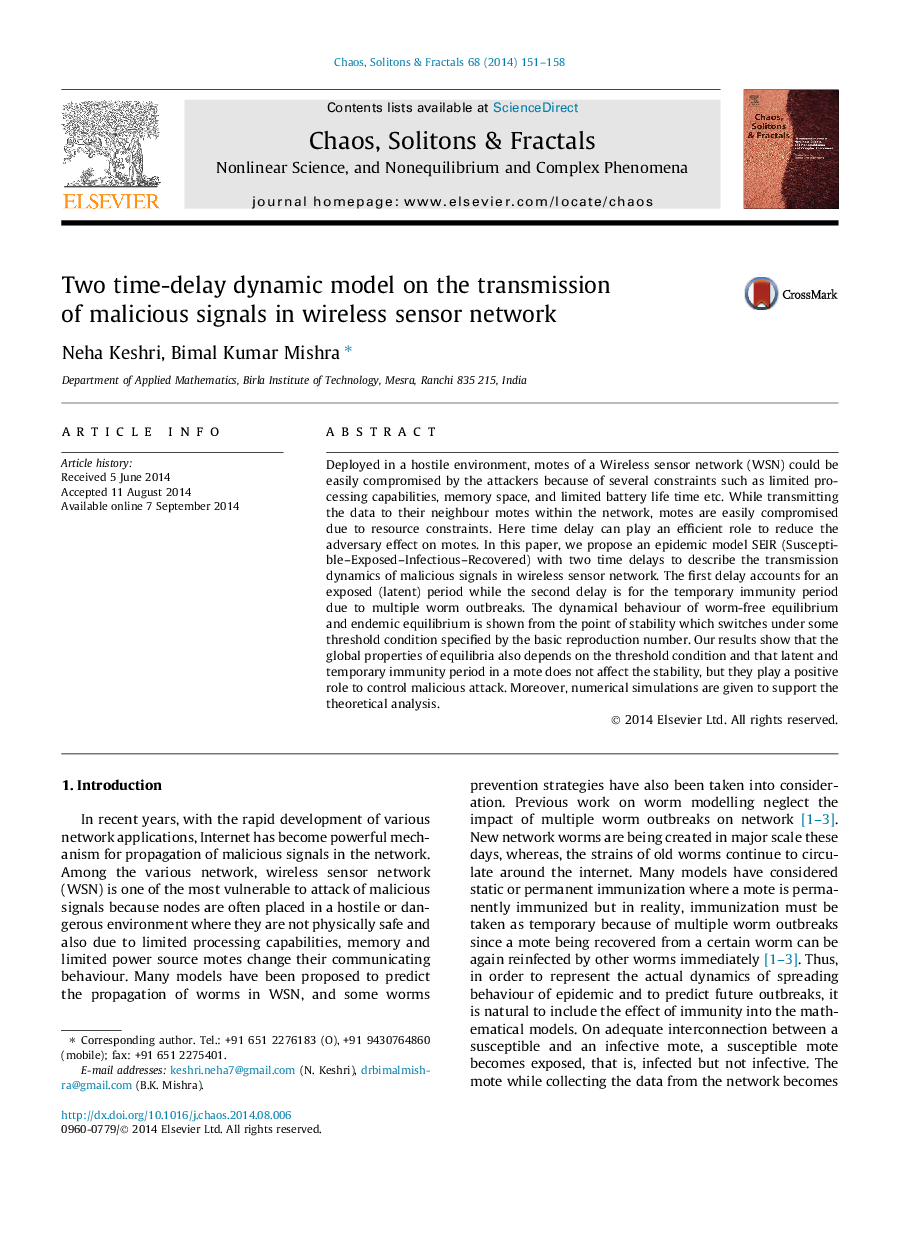| کد مقاله | کد نشریه | سال انتشار | مقاله انگلیسی | نسخه تمام متن |
|---|---|---|---|---|
| 1889268 | 1533656 | 2014 | 8 صفحه PDF | دانلود رایگان |
• Role of time delay to reduce the adversary effect in WSN is explored.
• Model with two time delays is proposed to analyse spread of malicious signal in WSN.
• Dynamical behaviour of worm-free equilibrium and endemic equilibrium is shown.
• Threshold condition for switch of stability are obtained analytically.
• Relation between stability and the two time delays is also explored.
Deployed in a hostile environment, motes of a Wireless sensor network (WSN) could be easily compromised by the attackers because of several constraints such as limited processing capabilities, memory space, and limited battery life time etc. While transmitting the data to their neighbour motes within the network, motes are easily compromised due to resource constraints. Here time delay can play an efficient role to reduce the adversary effect on motes. In this paper, we propose an epidemic model SEIR (Susceptible–Exposed–Infectious–Recovered) with two time delays to describe the transmission dynamics of malicious signals in wireless sensor network. The first delay accounts for an exposed (latent) period while the second delay is for the temporary immunity period due to multiple worm outbreaks. The dynamical behaviour of worm-free equilibrium and endemic equilibrium is shown from the point of stability which switches under some threshold condition specified by the basic reproduction number. Our results show that the global properties of equilibria also depends on the threshold condition and that latent and temporary immunity period in a mote does not affect the stability, but they play a positive role to control malicious attack. Moreover, numerical simulations are given to support the theoretical analysis.
Journal: Chaos, Solitons & Fractals - Volume 68, November 2014, Pages 151–158
